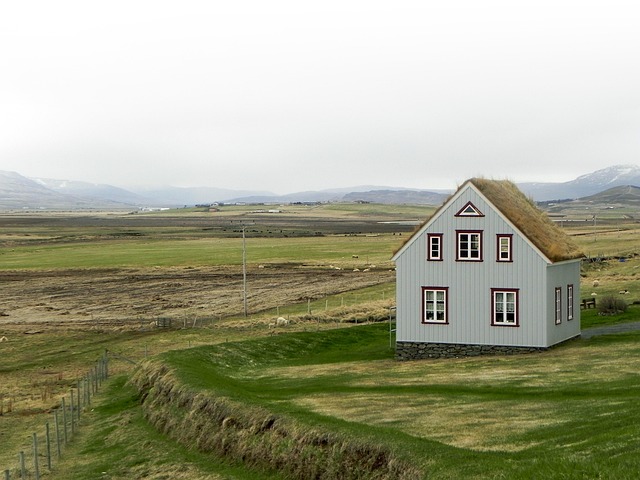Home insulation is a powerful tool for energy efficiency, reducing utility bills and carbon emissions by trapping heat during colder months and blocking excess heat in warmer ones. To achieve year-round savings through sustainable home improvements, conduct an inspection focusing on attics, walls, windows, and doors, prioritize attic insulation upgrades, seal windows and doors, and consider energy-efficient systems and smart habits. Opting for natural, renewable, and recycled materials like cellulose insulation reduces waste while offering significant energy savings and minimizing your household's carbon footprint. Investing in better insulation is a crucial step towards a more eco-friendly home with enhanced comfort and efficiency.
“Enhance your home’s efficiency and comfort with a focus on sustainable home improvements: improving insulation. This article guides you through the basics, benefits, and practical steps for optimal year-round savings. We’ll explore how identifying weak spots in your home’s insulation can lead to significant energy reductions and environmental impacts. By choosing eco-friendly materials, you contribute to long-term cost savings and a greener planet.”
Understanding Home Insulation: The Basics and Benefits
Understanding Home Insulation: The Basics and Benefits
Home insulation is a critical component of energy-efficient living, offering both environmental and financial benefits. It works by trapping heat during winter and keeping excess heat out during summer, reducing the need for heating and cooling systems. This simple yet effective strategy not only lowers utility bills but also contributes to a sustainable home improvement. By creating a barrier between the indoor environment and the exterior climate, insulation helps maintain a comfortable temperature year-round.
One of the key advantages of proper insulation is its role in promoting a greener planet. Sustainable home improvements like these reduce energy consumption, thereby lowering carbon emissions. This not only benefits the environment but also has long-term economic savings for homeowners. With rising energy costs, investing in quality insulation can provide significant returns over time, making it a practical and eco-friendly choice.
Identifying Areas for Improvement in Your Home
Identifying areas for improvement in your home is the first step towards achieving year-round savings through sustainable home improvements. Start by conducting a thorough inspection, focusing on attics, walls, windows, and doors. Look for any gaps or cracks that could allow heat loss during winter or heat gain during summer. Insulation is key; consider adding or upgrading insulation in your attic, as hot air rises, and it can significantly impact energy efficiency. Check if your windows and doors are sealed properly to prevent drafts, and think about switching to double-glazed panels for better insulation.
Additionally, assess your heating and cooling systems. Upgrading to energy-efficient models or adding programmable thermostats can save money in the long run. Sustainable home improvements don’t stop at structure modifications; it’s also about adopting smart habits. For example, using natural lighting during the day and adjusting thermostat settings accordingly can reduce energy consumption. By identifying and addressing these areas, you’ll be well on your way to achieving a more comfortable home and saving money year-round.
Choosing Sustainable Materials for Insulation Upgrades
When considering insulation upgrades, opting for sustainable materials is a wise choice for both your home and the environment. Sustainable home improvements are gaining popularity as folks become more conscious of their ecological footprint. One key aspect is selecting natural, renewable, and recycled materials that can effectively insulate spaces. For instance, cellulose insulation made from recycled paper is an excellent option, offering superior thermal performance while being gentle on the planet.
This approach not only reduces energy consumption but also minimizes waste, as many traditional insulation options rely heavily on non-renewable resources. By choosing sustainable materials, you contribute to a greener future while enjoying year-round savings on your energy bills. It’s a win-win for both your home and the planet!
Long-Term Savings and Environmental Impact of Better Insulation
Investing in better insulation for your home is one of the most effective sustainable home improvements you can make. Over time, it significantly reduces energy bills, as the optimized temperature control means less reliance on heating and cooling systems. This results in not only year-round savings but also a reduced carbon footprint—a win for both your wallet and the environment.
Better insulation acts as a barrier, preventing heat loss during winter and heat gain during summer. It helps mitigate the effects of extreme weather conditions, making your home more comfortable and efficient. By cutting down on energy usage, you contribute to a greener planet, reducing the demand for non-renewable resources and lowering your household’s environmental impact.
Upgrading your home’s insulation is one of the most effective strategies for achieving year-round comfort while significantly reducing energy bills. By addressing areas of improvement and selecting sustainable materials, you not only enhance your living environment but also contribute to a greener planet. The long-term savings and environmental benefits make it a compelling choice for anyone looking to embark on sustainable home improvements.
